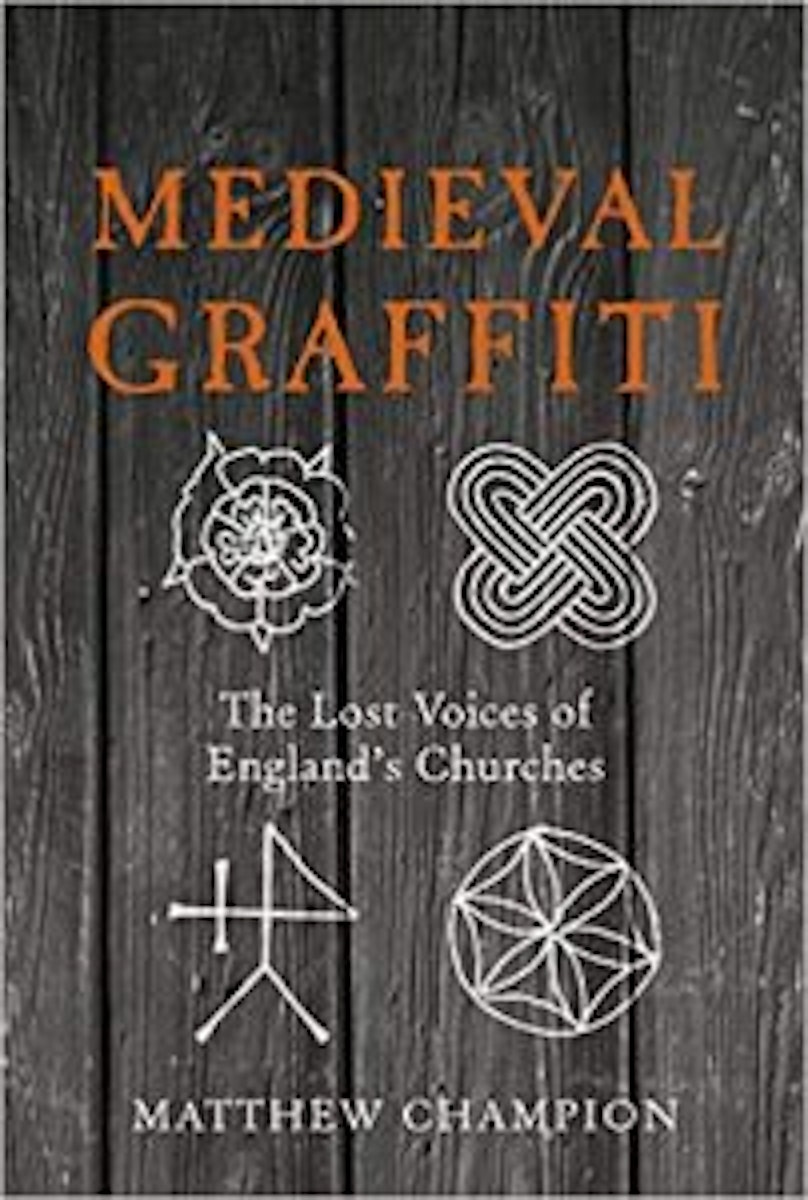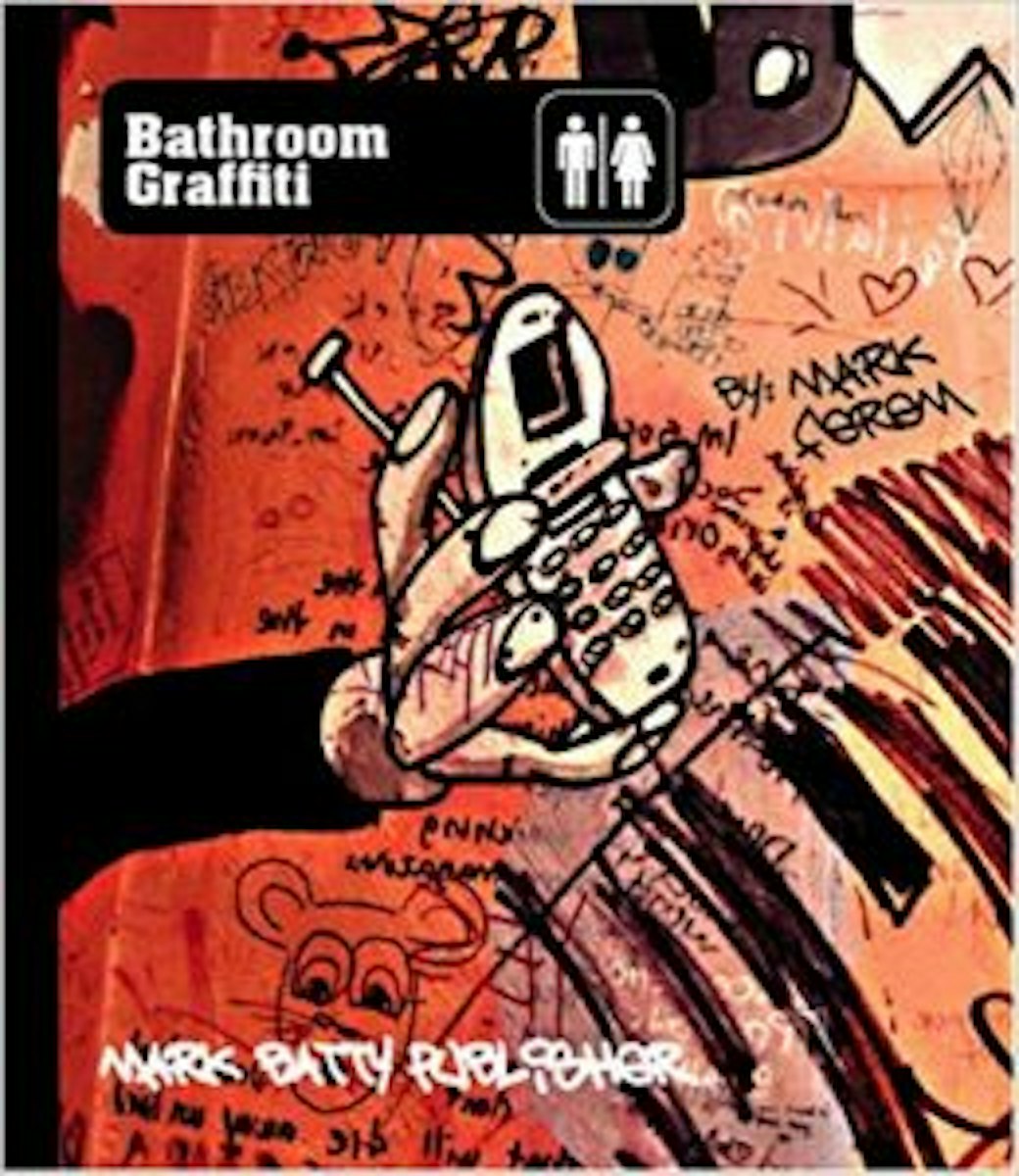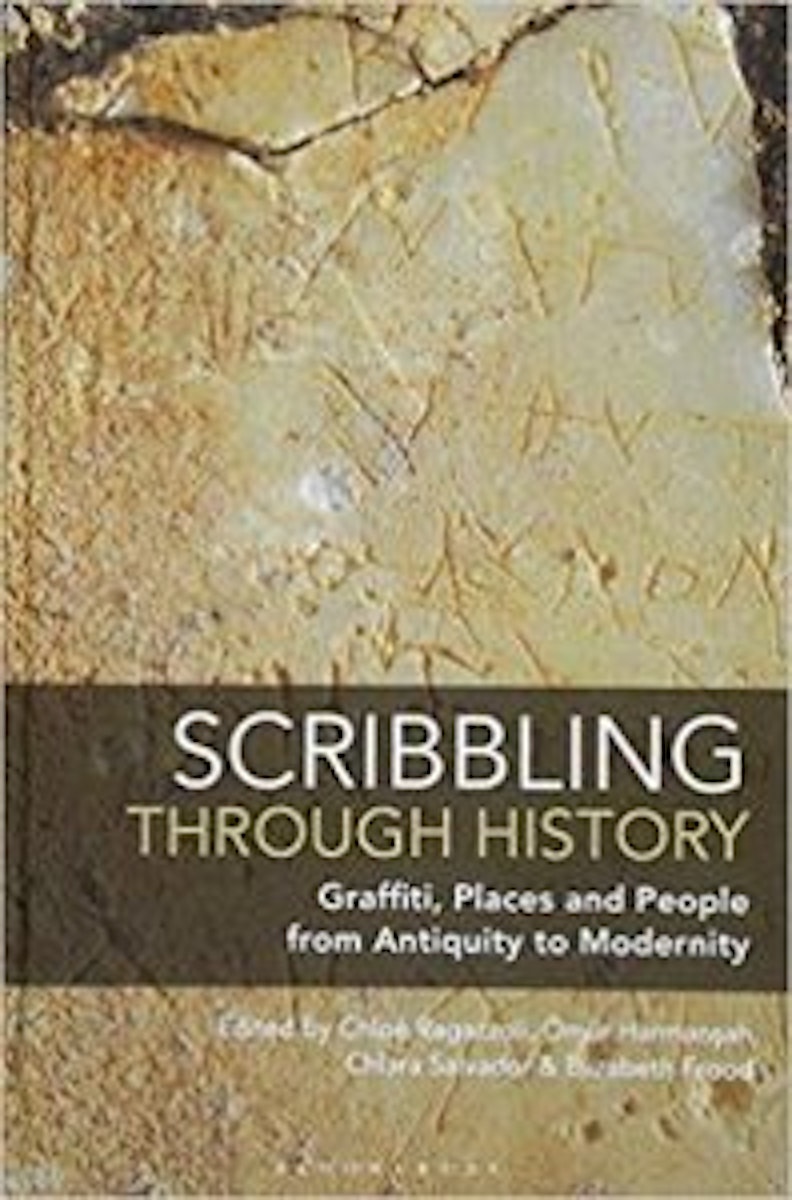
Loos, Lewdness, and Literature Tales from the Boghouse
In the early 1730s, a mysterious editor (known only as “Hurlothrumbo”) committed to print a remarkable anthology: transcriptions of the graffiti from England’s public latrines. For all its misogynistic and scatological tendencies, this little-known book of “latrinalia” offers a unique and fascinating window into Georgian life. Maximillian Novak explores.
April 17, 2019
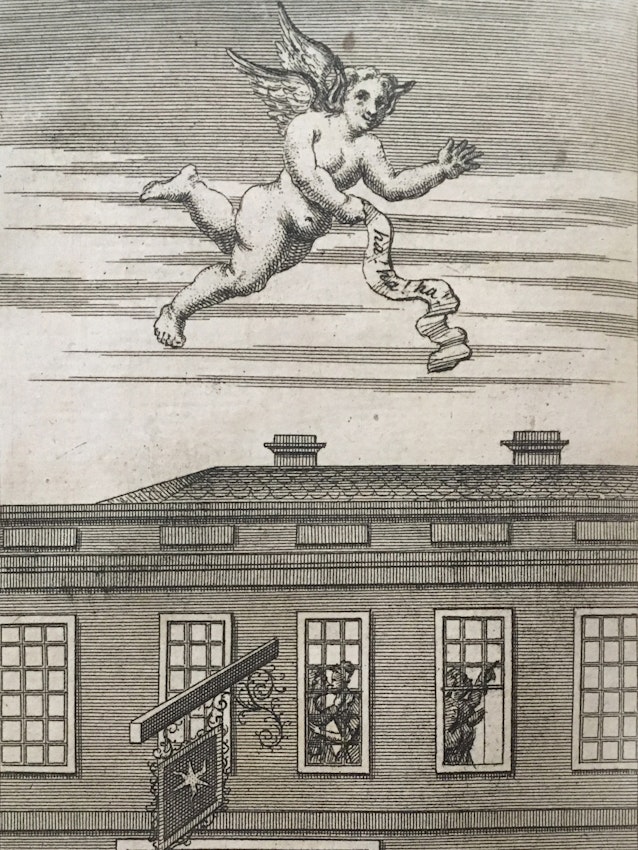 Scroll through the whole page to download all images before printing.
Scroll through the whole page to download all images before printing.Detail from the frontispiece of the 2nd edition of The Merry-Thought: or, the Glass-Window and Bog-House Miscellany (1732).
The literary scholar Roger Lonsdale once suggested that our knowledge of eighteenth-century poetry has depended heavily on what our anthologies have decided to print.1 For the most part modern anthologies have, in turn, drawn on collections put together at the end of the eighteenth century and the beginning of the next, when the ideal for inclusion was essentially that of “polite taste”. The obscene, the feminine, and the political were by general cultural agreement usually omitted. Lonsdale is not the only scholar questioning the basis of the canon; indeed, revisionism is fast becoming one of the more ingenious — and useful — parlor games among academics. Modern readers are no longer so squeamish about obscenity nor so uncomfortable with the purely personal lyric as were the editors at the end of the eighteenth century. And we are hardly likely to find poetry written by women objectionable on that score alone. In short, the anthologies we depend upon are out of date.
Among the works that would never have been a source of poems for the canon, and one mentioned by Lonsdale, was the collection of verse published in four parts by J. Roberts beginning in 1731, The Merry-Thought: or, the Glass-Window and Bog-House Miscellany, commonly known simply as The Bog-House Miscellany. Its contemporary reputation may be described as infamous. James Bramston, in his The Man of Taste (1733), mentioned it as an example in poetry of the very opposite of “good Taste”.2 Polite taste, of course, is meaningful only if it can define itself by what it excludes, and nothing could be in worse taste than a collection of pieces written on windows, carved in tables, or inscribed on the walls of Britain’s loos.
Just as the compilers of a modern work, The Good Loo Guide, were parodying a well-known guide book to British restaurants, so the unknown compilers of The Merry-Thought had some notion, however discontinuous, of parodying the nation’s polite literature. Were not Alexander Pope and Jonathan Swift famous for their distinguished miscellanies? What could be more amusing than a collection of poems that represented a different poetic ideal — a collection of verse with none of the pretensions to artistic merit claimed by the superstars of the poetic world — the spontaneous productions of nonpoets in moments of idleness or desperation? Apparently some of the inscribers in the bog-houses used excrement as a medium for — as well as a subject of — their inscriptions (a somewhat literal prefiguring of T. S. Eliot’s claim that, to a certain extent, all poetry was a form of “defecation”.3 The Merry-Thought, then, is not even the kind of art that Dryden attacked in MacFlecknoe and Pope in his Dunciad — the work of bad poets masquerading as geniuses. Rather, it is a primitive form of folk art produced as a more or less spontaneous act of play or passion, and achieving some small degree of respectability only when practiced by a respected poet and collected with his more serious verse.4 Like modern “serial” graffiti, it could function as a form of communication since the first inscriptions often provoked those who followed to make their own contributions. (In this way too we could perhaps even see it as some kind of early incarnation of Twitter.)
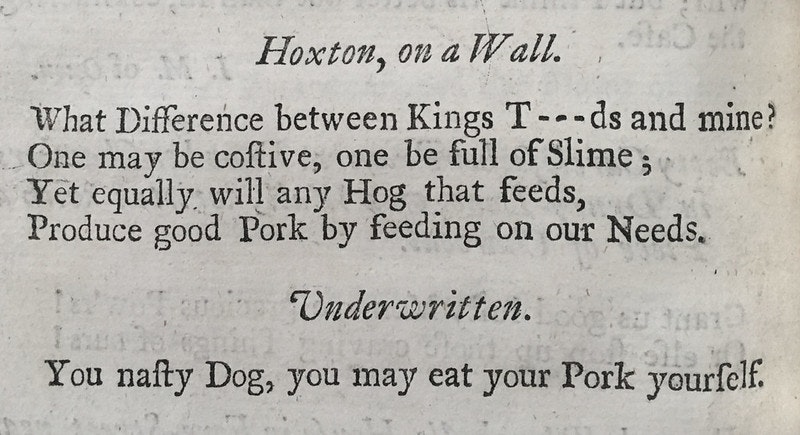 Scroll through the whole page to download all images before printing.
Scroll through the whole page to download all images before printing.An example of the many exchanges carried out.
Indeed, one of the more interesting aspects of graffiti is that in an impermanent form it testifies to the continuance over the centuries of certain human concerns. Studies of graffiti have often focused on particular modern conflicts between races or nations, on drug problems, and on specific political commentary.5 But such local matters aside, the content of modern graffiti is surprisingly like that of earlier periods: scatological observations, laments of lovers, accusations against women for their sexual promiscuity, the repetition of “trite” poems and sayings, and messages attributed to various men and women suggesting their sexual availability and proficiency. And if the political targets have changed over the years, many of the political attitudes have remained consistent. Graffiti is an irreverent form, with strong popular and anti-establishment elements. As actions common to all classes, eating, drinking, defecation, and fornication find their lowly record in graffiti-like form.
On the most basic level, a writer will observe that the excrement of the rich differs in no way from that of the poor. Thus one poem, taken supposedly from a “Person of Quality’s Boghouse”, has the following sentiment:
Good Lord! who could think,
That such fine Folks should stink?6
There is nothing very “polite” about such observations, and no pretension to art. These verses belong strictly to folklore and the sociology of literature, but they suggest some continuing rumbles of discontent against the class system, the existence among the lower orders of some of the egalitarian attitudes that survived the passing of the Lollards and the Levellers. Who were the writers of these pieces? Were they indeed laborers? Or were they from the lower part of what was called the “middle orders”? Is there some evidence to be found in the very fact that they could write?
Graffiti may, indeed, tell us something about degrees of literacy. One wit remarked that whatever the ability to read or write may have been at the time, almost everyone seemed to have been literate when presented with a bog-house wall: “Since all who come to Bog-house write”.7 The traditional connection between defecation and writing was another comparison apparent to the commentators. One wrote:
There’s Nothing foul that we commit,
But what we write, and what we sh - t.8
And the lack of some paper or material to clean the rear end provoked the following sentiment in the form of a litany:
From costive Stools, and hide-bound Wit,
From Bawdy Rhymes, and Hole besh - - t.
From Walls besmear’d with stinking Ordure,
By Swine who nee’r provide Bumfodder
Libera Nos----9
Other types of graffiti, however, vary from the very earnest expression of affection to the non-excrementally satiric. One of the more unusual is a poem in praise of a faithful and loving wife:
I kiss’d her standing,
Kiss’d her lying,
Kiss’d her in Health,
And kiss’d her dying;
And when she mounts the Skies,
I’ll kiss her flying.10
Underneath this poem, The Merry-Thought records a favorable comment on the sentiment.
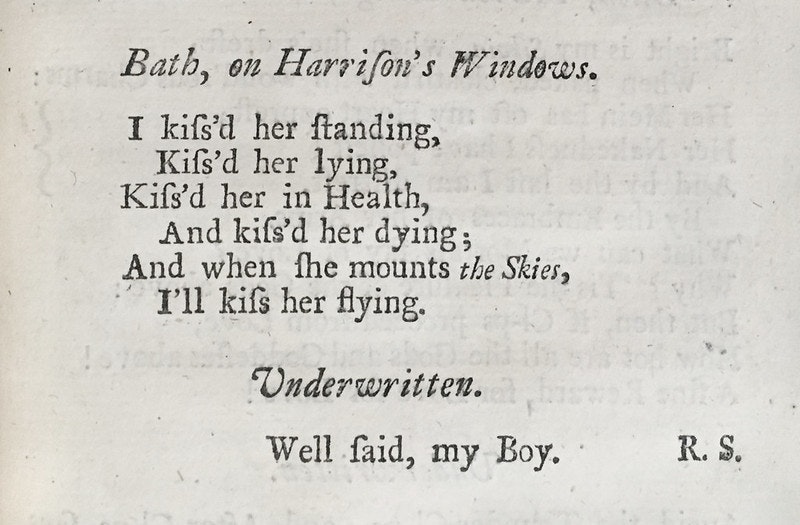 Scroll through the whole page to download all images before printing.
Scroll through the whole page to download all images before printing.An example of the many exchanges carried out.
Even more earnest is the complaint of a woman about her fate in love:
Since cruel Fate has robb’d me of the Youth,
For whom my Heart had hoarded all its Truth,
I’ll ne’er love more, dispairing e’er to find,
Such Constancy and Truth amongst Mankind.
Feb. 18, 1725.11
We will never know why she was unable to marry the man she truly loved, but her bitterness may have been short-lived. Just after this inscription comes a cynical comment identifying the lady as a member of the Walker family. And the writer insists that like all women she was inconstant, since he kissed her the next night.
This cynical approach to love and women dominates The Merry-Thought. Prevailingly, women are depicted as sexually insatiable, as in a piece written by a man who takes a month’s vacation from sex to recoup his strength.12 And the related image of the female with a sexual organ capable of absorbing a man plays a variation on the vagina dentata theme.13 In a more realistic vein, though equally cynical, is the poem on the woman who complained of her husband making her pregnant so often:
A poor Woman was ill in a dangerous Case,
She lay in, and was just as some other Folks was:
By the Lord, cries She then, if my Husband e’er come,
Once again with his Will for to tickle my Bum,
I’ll storm, and I’ll swear, and I’ll run staring wild;
And yet the next Night, the Man got her with Child.
S. M. 1708.14
S. M. is clearly unsympathetic to the plight of married women in an age with only the most primitive forms of birth control.15 The picture of her as a long-suffering person is undercut by the casual male assumption that giving birth was not really dangerous and that women make too much of the pain and difficulty. That women were often forced to go through thirteen or fourteen deliveries when little thought had yet been given to creating an antiseptic environment for childbirth is apparently of little concern to S. M., who finds in the apparent willingness of the woman to have sexual intercourse one more time sufficient reason for contempt.
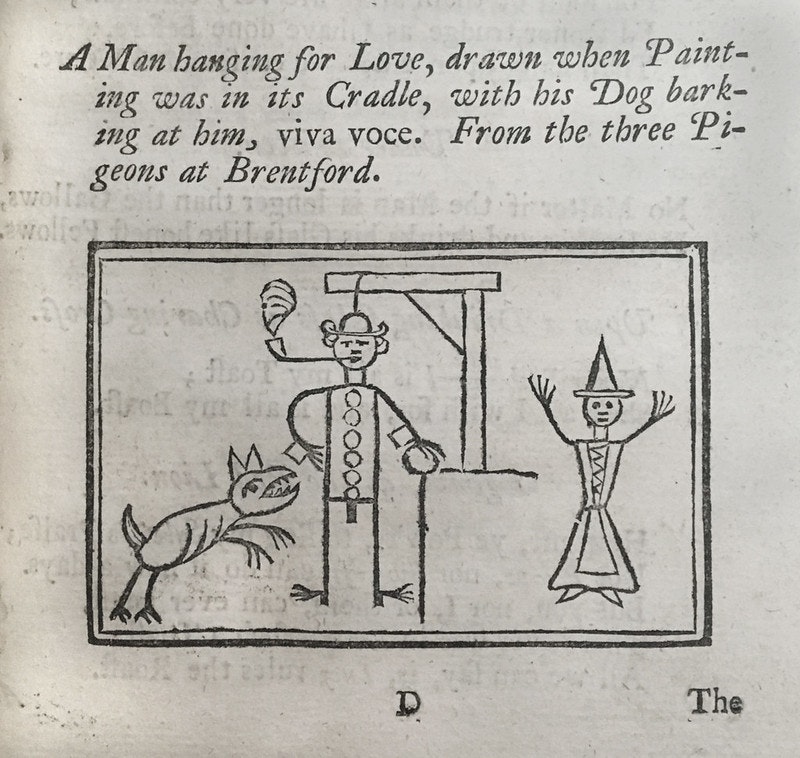 Scroll through the whole page to download all images before printing.
Scroll through the whole page to download all images before printing.The only drawing to be included in The Merry-Thought. It depicts a man hanging himself for love, which in the responding comments raises a considerable debate on whether such a thing can indeed occur: “the Man is longer than the Gallows”. (Part 2, pp. 17–18).
In addition to giving glimpses into social attitudes, The Merry-Thought has a variety of inscriptions that show the way these writings functioned. Professor George Guffey, in his introduction to part one of the 1982 Augustan Reprint Society edition of the work, remarks upon the proposal scene carried on in Moll Flanders between Moll and the admirer who will prove to be her third husband and her brother.16 Such scenes involving witty proposals and responses cut into the windows of taverns were real enough at the time. An exchange found in part two of The Merry-Thought is not, however, half so satisfactory. The woman takes umbrage at her admirer’s suggestions that the glass on which he writes is “the Emblem” of her mind in being “brittle, slipp’ry, [and] pois’nous”, and writes in retort:
I must confess, kind Sir, that though this Glass,
Can’t prove me brittle, it proves you an Ass.17
Though an easy cynicism about women’s availability and about the body’s insistently animal functions predominates, there is enough variety in The Merry-Thought to provide something of a picture of eighteenth-century society were any future anthropologists to come upon this volume as the sole remnant of that period. They would see a society engaged rather more in animal functions than in intellectual pursuits — a society rather more concerned with drinking, love, and defecation than the picture presented by the polite and intellectual literature of the time allowed. But they would also find in the satirical squibs on Corny, the Cambridge bookseller and printer, evidence of learning and university life as well as a criticism of opera.18 They would see numerous young men longing for their mistresses to soften their hearts toward them, and cynical older men who had lost their illusions about love. But they could also come upon a straight piece of philosophy taken from the still fashionable Flask tavern in Hampstead or lowly bits of pious folk wisdom.19 More often, however, they would uncover a society in which there was little of the generalized style that characterizes even the most personal formal poetry of the period. Many of the writers identify themselves and the names of the women they love or detest. In short, if these volumes do little else, they do provide a vivid glimpse into the personal life of the time, and to that extent an injection of some of these inscriptions into the anthologies of the period might help in providing a lively and piquant context for the serious artistic production of writers like John Gay and Jonathan Swift.
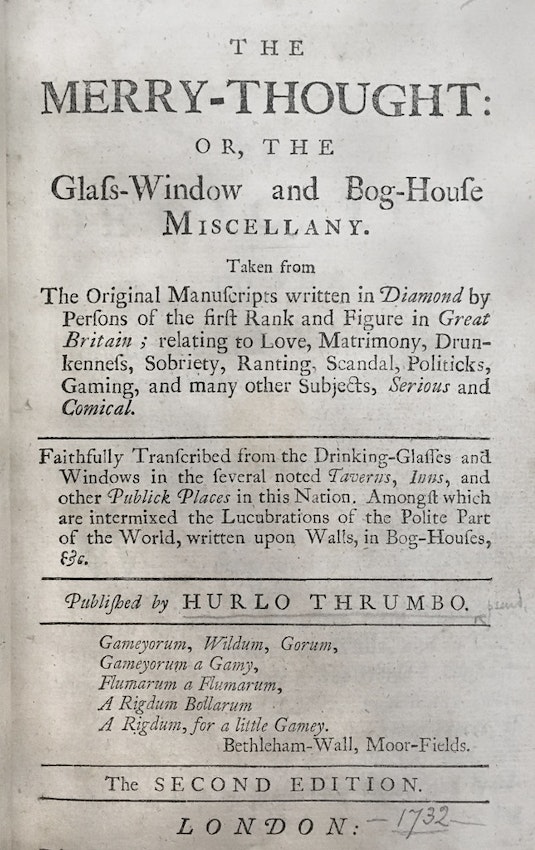 Scroll through the whole page to download all images before printing.
Scroll through the whole page to download all images before printing.Title page for the 2nd edition of The Merry-Thought.
The announced “publisher” of this folio was one Hurlothrumbo, a character drawn from the theatrical piece of that name by Samuel Johnson of Cheshire (1691–1773). Professor Guffey has proposed that James Roberts, for whom the four parts were printed, “was almost certainly the collector of the graffiti” and that the name of Hurlothrumbo was invoked in order to attract some of the attention that Samuel Johnson of Cheshire and his play were still receiving two years after the play’s first performance and publication.20 But Roberts would appear an unlikely candidate for the role of editor.21 I would suggest, rather, the possibility of a more direct and active connection with Samuel Johnson of Cheshire: that he was himself likely the compiler of the four parts of The Merry-Thought and that, whatever the individual versifiers may have intended, this infamous collection of graffiti — as collection — shares very closely with Johnson’s other work a spirit of wild variety, eccentric juxtaposition, and essential anarchism that is meant to lead, not to clever parody of polite literature, but to a new, almost apocalyptic vision of the sublime.
At the first level, Hurlothrumbo: or, The Super-Natural (1729) itself appears to be quite simply a parody, in this case of opera in the form of a work mixing dialogue and song in a manner similar to but much wilder than Gay’s Beggar’s Opera. Johnson’s apparent takeoff on the heroics of opera managed to include in its attack a commentary upon the absurdity of contemporary tragedy as well as some specific references to those works that aimed at the sublime. Lines like “This World is all a Dream, an Outside, a Dunghill pav’d with Diamonds” seem to call the very nature of metaphor into question, especially when juxtaposed with other delirious lines such as “Rapture is the Egg of Love, hatched by a radiant Eye” or by songs such as that sung by the king on contemplating the effects of swallowing gunpowder and brandy together:
Then Lightning from the Nostrils flies.
Swift Thunder-bolts from Anus, and the Mouth will break,
With Sounds to pierce the Skies, and make the Earth to quake.22
Hurlothrumbo may be mostly nonsense, but from the standpoint of literary history, it is highly significant nonsense. It represented a revolt against all dramatic conventions and shared a number of qualities with graffiti, including the sense of spontaneity.
Had Johnson’s intention been something as relatively uncomplicated as literary parody he would have achieved some minor fame in a century which could boast any number of geniuses who had specialized in deriding the pretentiousness of the more established literary forms, particularly tragedy, the epic, and the pastoral. But Johnson of Cheshire lacked the aesthetic distance required of sustained irony and had a grander purpose in mind. His tradition was not that of the parodist but rather that of the visionary — the mystic whose tendency is to merge the high and the low, the sublime and the absurd, within a single work.7 He was not attacking the extravagant rants of the heroic play as Fielding was to do in his Tragedy of Tragedies (1731) or reflecting on opera and pastoral as Gay had done in The Beggar’s Opera (1728); rather he was trying, however unsuccessfully, to maintain his own work at the highest reaches of sublimity. He was like one of Pope’s “Flying Fishes”, who “now and then rise upon their fins and fly out of the Profound; but their wings are soon dry, and they drop down to the bottom.”23
In his preface to The Blazing Comet; or the Beauties of the Poets (1732), Johnson of Cheshire noted that “the same thought that makes the Fool laugh, may make the wise Man sigh”.24 Given such an equivocal approach to the ways in which the audience responded to his work, the poet could easily shrug off audience laughter to his most “Sublime” lines. He was always ready “to leap up in Extasy; and dip . . . [his] Pen in the Sun”.25 Parts of Hurlothrumbo, particularly the scene between Lady Flame and Wildfire (both of whom are described in the list of characters as “mad”) in which Wildfire threatens to cast off his clothes and “run about stark naked”,26 bear an odd resemblance to “The King’s Cameleopard” in Huckleberry Finn. But the disconnected verbal structure, along with the music and dancing, achieves a strange mixture that must have amused and, to a certain extent, bemused its audience.
Johnson called upon “Variety” as his most important artistic principle, and he developed his ideas on this subject in A Vision of Heaven (1738), a work which bears a striking resemblance to William Blake’s The Marriage of Heaven and Hell. Johnson argues that all surface appearances are merely a form of “Hieroglyphic” concealing a true vision of things.27 His narrator is capable of what Blake was to call “mental flight”, and there is a particularly vivid passage in which the stars are seen as throwing down “freezing Daggers” at the poor, starving children in the streets and another in which we encounter an aged woman who wields a broom against spiders and against all the young women who threaten to come near the narrator.28 The mystic temperament is often capable of making connections between the spiritual and the excremental, between the sublime and the bathos of “Thunder-bolts from Anus”.29 Blake, we should recall, has poems depicting himself defecating.30
Whether Johnson actually collected The Merry-Thought or not, the reasons for the association of these volumes with his name should then be clear enough. While Fielding might appropriate the title “Scriblerus Secundus” by way of staking out a line of descent for his humor and satire, Hurlothrumbo was so thoroughly connected with Johnson and his play that I can see no reason why he should not be considered the likely editor of such a varied and eccentric collection of verse and prose as The Merry-Thought. That the “Variety” bears no resemblance to that of serious art, however, should be as obvious as the difference between a William Blake and a Samuel Johnson of Cheshire. As William Hogarth was to remark, “variety uncomposed, and without design is confusion and deformity.”31
Maximillian Novak is Distinguished Professor of English Emeritus at UCLA. He has taught literature at the university level for close to fifty years and published twelve critical studies and major editions along with hundreds of articles and reviews. He has specialised in the Restoration and eighteenth century, especially the novel and drama of that period. He has also taught and written in the area of Jewish-American fiction.





